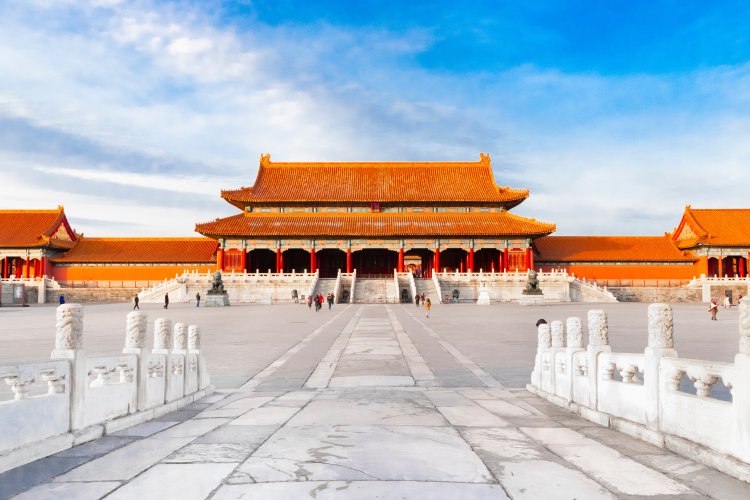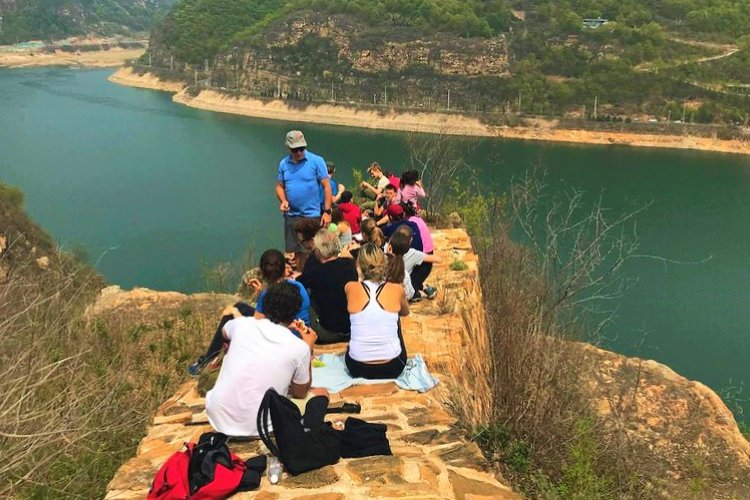Chasing Dreams: An Epic 4 Month, 18,484km Ride Across China
There's one big silver lining for those of us who have been stuck inside China for months on end. While overseas jaunts are out, domestic travel is in. Precluded from the usual roster of trips to see family and friends, we can check out those far-flung spots in the Middle Kingdom that we never seemed to get around to. But few have embraced this concept as heartily as Mads Vesterager Nielsen, who between May 3 and Sep 6 rode his motorcycle cross-country through China, culminating in a whopping 18,484-kilometer journey. Inspired by legendary trade and historical routes, he and his girlfriend (and regular the beijinger contributor) Tautvile Daugelate, who accompanied him for about half the trip, wove together an epic route of changing landscapes across 17 different provinces and municipalities.
Ahead of his talk and Q&A at The Great Outdoors on Wednesday night, we caught up with the great Dane to discuss his epic inspirations, dodging authorities, and why you should always carry a bowtie.
You seem to have been absolutely everywhere during your trip. Where exactly did you go?
I drove from Beijing to the Yellow Sea, along the Yellow River through the Hexi Corridor of the Silk Road to the legendary Buddhist caves of Dunhuang to the end of the Great Wall of China – The Jade Gate. From there I crossed diagonally south-east through the deserts of Qinghai on the Himalayan plateau, over the Tibetan Highland grasslands in Sichuan, down onto the lowlands moving through Chongqing, Hubei, Wuhan, Hunan, and into Jiangxi province. From Jiangxi province, I chased the route of the Long March through Jiangxi, Hunan, Guangxi, Guizhou, Yunnan, Sichuan, Gansu, and Shaanxi. I stayed at a Daoist temple before I drove north along the Yellow River. After I arrived in Inner Mongolia I turned back towards Beijing. The overall route was planned, but so many places along the way were unplanned and totally spontaneous.

What motivated you to take this trip?
I have long wanted to embark on a modern adventure through China. I am very inspired by the Chinese and Western explorers that risked their lives to venture out on journeys of great exploration. This adventure of mine was oriented around the Chinese heartlands and the core myths that are at the heart of Chinese history and modern society. I have spent many years going over the itinerary in my head, but I settled on this road around Christmas last year. I am always thinking of ideas for new adventures and I wanted to travel along routes shaped by the Chinese landscapes, like the Yellow and the Yangtze Rivers as well as the roads that emerge from stories and myths, like the Silk Road and the Long March. I was supposed to have set out a month earlier, but I had to postpone my departure several times because of the virus.
What kind of bike does one need to take on this kind of journey? What preparation did you have to do in advance?
The motorbike that I took is the sturdiest bastard of the Chinese roads. I call it the "Little Black Yak." It is the motorbike that nine out of ten waimai drivers ride in China and one of the most widely produced in the country. Before I left Beijing I took it to a "motuoshen," a motorbike Shaman – basically one of the most badass motorbike repair guys in Beijing – to have the brakes, wheels, and chain changed. I prepared for weeks up to the departure, but much of the gear, side bags, and skills I have collected over the past seven years. I also asked a Yijing oracle about how the journey would go, when would be the most auspicious date for my departure, and whether the virus would impact my travels.

Was it difficult to pack for such a long journey? Was there any piece of equipment you forgot to pack and really missed?
I had no warm jacket due to the limited space on the motorbike. It became a problem on the Himalayan plateau... In the end, I got myself a Yak jacket, which doubled as a blanket over my legs when the temperature fell at around 4,500 meters and I slept in my tent. On the other hand, I also packed my bowtie along with a blazer in the darkest corner of my backpack – but I actually used them twice! On the road, you need to be ready to dress for the festive occasion and they were unpacked for a Tibetan wedding and a wedding in Guizhou.
Did you encounter any difficulties from authorities during your trip?
Largely the authorities would greet me nervously, but then eventually ease up and let me stay. Although sometimes they would not. It would take a couple of hours for authorities to phone higher-ups and decide whether they would let me stay or not. That led to me sleeping more nights in my tent to avoid time-consuming run-ins with local cops.

Is there anywhere you wanted to go that you could not?
I really wanted to go to North-East China, but I had to drop it because of the corona situation there in May. Even the Yijing guy told me that northeast was not a place that would bring me any fortune – thank you cosmic powers, I guess.
You have lived in China for a long time and are passionate about the country and people, but was there any place that really surprised you?
Qinghai. It was the most surreal, desolate, and deadly landscape I have ever traveled through. Awesome and beautiful, the deserts, mountains, and remote colonies feel like the end of the world.
There are so many of my preconceptions that have changed through my, now 30,000 km, of several motorbike trips across China over the past seven years. This time, what really struck me was the breadth and depth of the dreams of ordinary people throughout China. Spurred by the corona immobility, it seemed to me like many people had reflected over what they want in life – from dreams of travels to the dreams of happiness under new social values for their families.
Nielson will be discussing his cross-country adventure at The Great Outdoors on Wednesday Oct 21, 7-9pm. RMB 50, includes a drink. For more info and to book, click here.
Images courtesy of Mads Vesterager Nielsen







